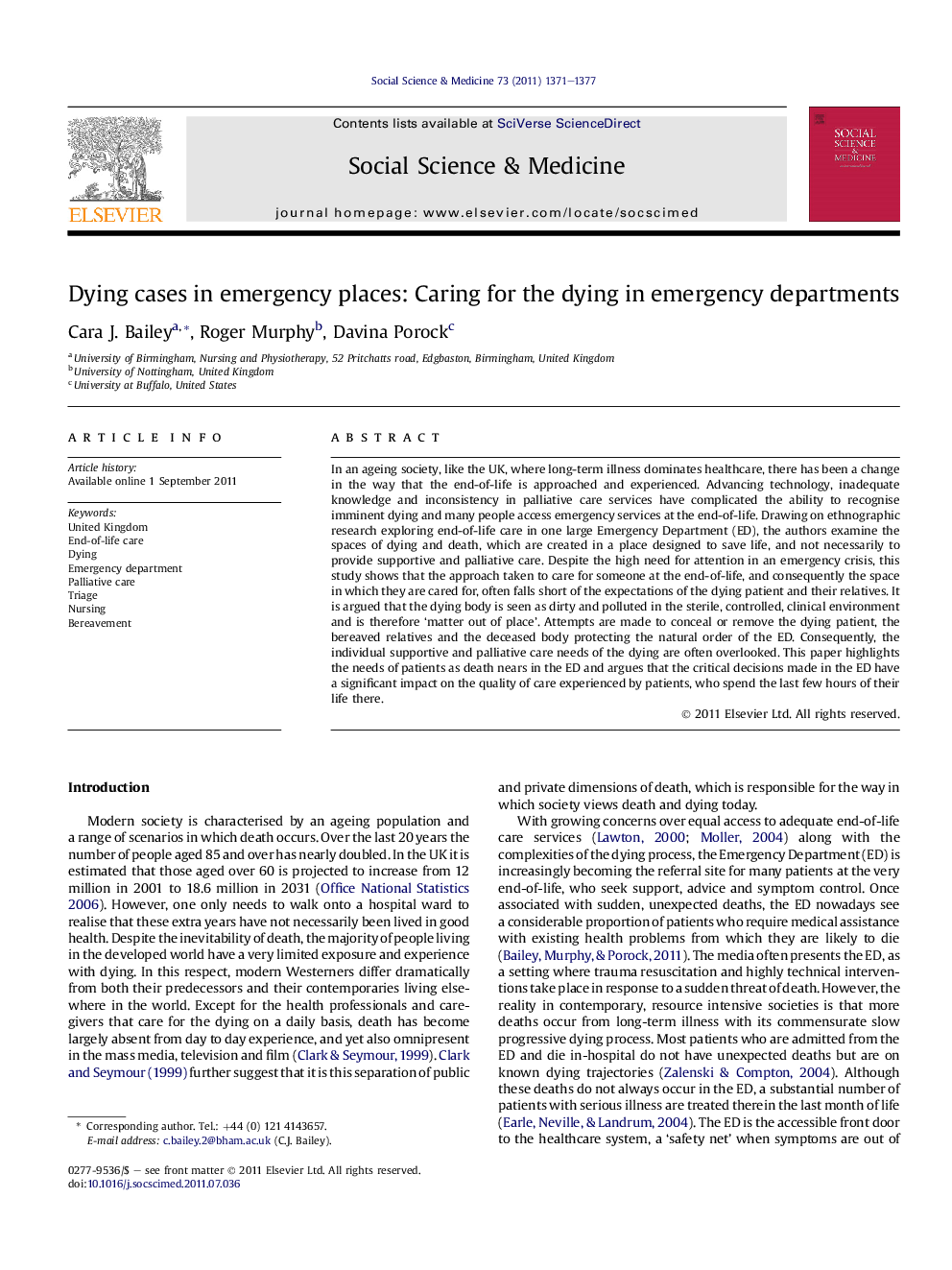| Article ID | Journal | Published Year | Pages | File Type |
|---|---|---|---|---|
| 952797 | Social Science & Medicine | 2011 | 7 Pages |
In an ageing society, like the UK, where long-term illness dominates healthcare, there has been a change in the way that the end-of-life is approached and experienced. Advancing technology, inadequate knowledge and inconsistency in palliative care services have complicated the ability to recognise imminent dying and many people access emergency services at the end-of-life. Drawing on ethnographic research exploring end-of-life care in one large Emergency Department (ED), the authors examine the spaces of dying and death, which are created in a place designed to save life, and not necessarily to provide supportive and palliative care. Despite the high need for attention in an emergency crisis, this study shows that the approach taken to care for someone at the end-of-life, and consequently the space in which they are cared for, often falls short of the expectations of the dying patient and their relatives. It is argued that the dying body is seen as dirty and polluted in the sterile, controlled, clinical environment and is therefore ‘matter out of place’. Attempts are made to conceal or remove the dying patient, the bereaved relatives and the deceased body protecting the natural order of the ED. Consequently, the individual supportive and palliative care needs of the dying are often overlooked. This paper highlights the needs of patients as death nears in the ED and argues that the critical decisions made in the ED have a significant impact on the quality of care experienced by patients, who spend the last few hours of their life there.
► The space in which dying patients are cared for affects the level of attention they receive in the emergency department. ► In the ED, designed to save life, staff attempt to hide the end-of-life through the segregation of the dying and bereaved. ► Dying patients and bereaved relatives frequently experience poor care due to their segregation in the ED. ► Death is perceived as ‘out of place’ in the ED and taints the setting that is more positively associated with saving life. ► The nurse is ideally placed to challenge existing practices to improve the quality of end-of-life care in the ED.
